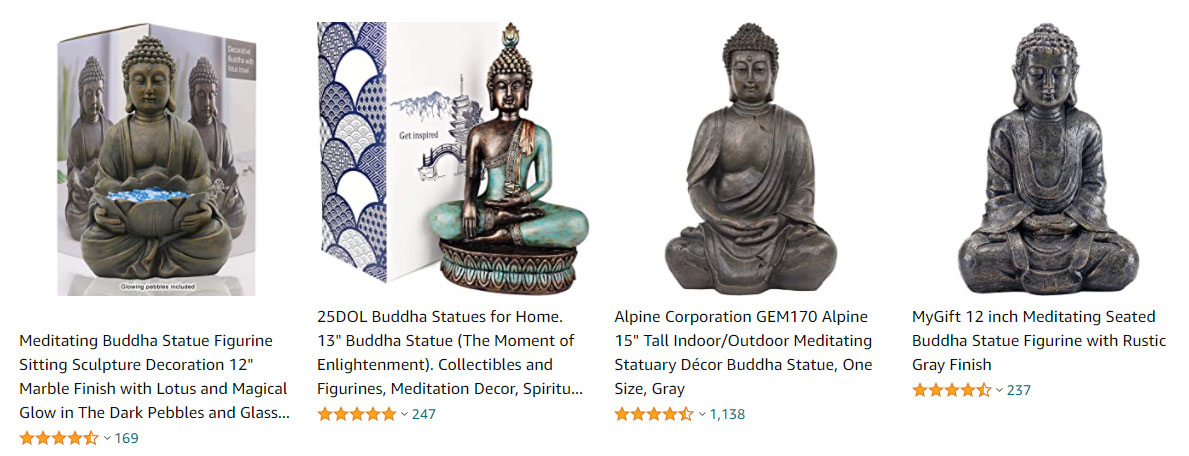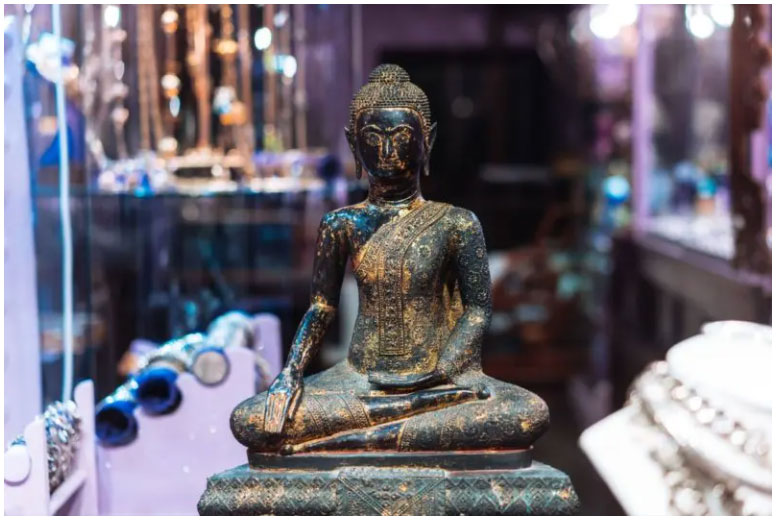Statue Of Buddha
True legend, Buddha embodies wisdom. Revered throughout the world, he inspires people with his teachings and values. Beyond the religious heritage he transmitted, Buddha is above all a symbol of spirituality, but also of personal development. Statues bearing his effigy are present everywhere his teachings are given. But what do Buddha statues really mean and how to place them? Find out here.
The story of Prince Siddhartha
Buddha is a title attributed to a person and which means "the one who knows, the one who understands" but also "the one who is awakened". A long time ago, the title of Buddha was first given to Prince Siddhartha Gautama, a prince who lived in southern Nepal in the sixth century BC. Son of the king of the Shakyas tribe, Siddhartha was a prince from a good family, with a good education. Throughout his youth, the prince never experienced want or suffering and lived in a kind of bubble of happiness. Very soon, he became interested in spiritual fulfillment. He was later married by his father who was not very enthusiastic about Siddhartha's spiritual freedom.
The quest for wisdom
Legend has it that Prince Siddhartha left his kingdom at the age of 29 in search of spiritual deepening. At a very young age, he was already attracted to all that concerned meditation and spiritual philosophical thought. During his journey, he spent 6 years of his life with the Brahmin priests where he suffered extreme deprivation and mortification.
Deciding that this went against his spiritual freedom, the prince decided to leave and in his quest for spiritual freedom, he settled under a fig tree (the Buddhi tree). There he began his true work. He was many times tempted by the devil who took different forms. It is in this part of his story that he experienced many sufferings where he came out victorious thanks to his meditation. It is at this time that enlightenment appeared to him. He reaches enlightenment and becomes the Buddha or the enlightened one. All his desires and sufferings are extinguished and he explored Nirvana. He reached the highest summit of sanctity without being a god.
The beginning of the teachings
Later, the Buddha decided to share his knowledge and enlightenment with others in order to put an end to the suffering caused by the life cycle. His first teachings began in the city of Benares (India). There he taught the Dharma which means the path to maturation and liberation from all suffering on earth.
The Buddha's teaching evokes great wisdom and describes the right path as the "Middle Way", i.e. the one that remains far from extremes. The foundation of his teaching is to always keep the body healthy to light the lamp of wisdom and to keep the mind clear and firm. Later, Buddha's teaching gave birth to Buddhism, which in some ways resembles a religious stream.
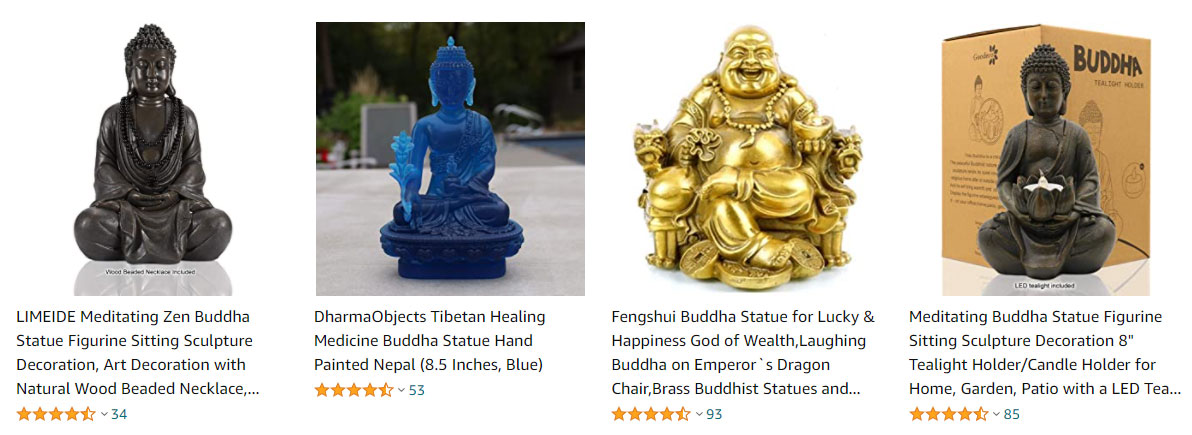
Why have a Buddha statue at home?
Buddha's teaching can often be confused with Buddhism. Although this form of religion is unique to certain civilizations, this has not prevented Buddha's teachings from traveling the world. The wisdom of the enlightened one is universal and the whole world shares it. Buddha's entire life was a special teaching for having a perfectly balanced life, between wisdom of the mind and energy of the body. That is why the four corners of the world have appropriated this teaching.
To commune with this universal wisdom, many followers, but also simple people do not hesitate to install the statue of Buddha in their house, their office or in a particular corner of their life. It is not only in Buddhist temples that this kind of statue is now found, but it is also possible to have one in one's own home, as long as one knows where to place it.
Indeed, the Buddha statue represents a feeling of well-being and peace, which unequivocally reminds us of the profound teachings of his life. It brings a feeling of calm and tranquility into a home. Moreover, the statue enters the style of decoration based on Feng Shui. It consists in improving the decoration of the house, to have a Zen, relaxing, stimulating environment.
It is also possible to have a Buddha statue at home to symbolize prosperity, wealth, fullness and wisdom, and having a Buddha statue at home can also be linked to a spiritual practice, a communion with the enlightened, from meditation.
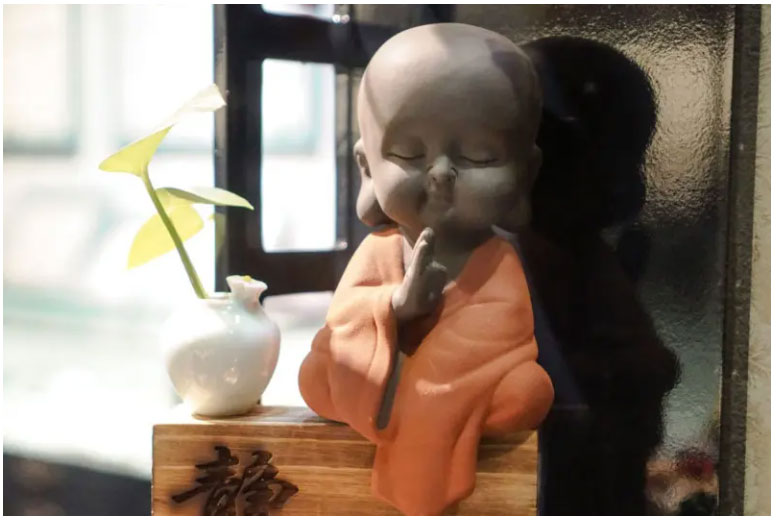
What do Buddha statues mean?
There are many forms of Buddha statues. It varies according to the positions that the enlightened one can take on these statues, but also according to the various "mudras". It is the gestures of the hand carried out by the Buddha which are specific means of spiritual expression.
The positions of the statues of Buddha
The Buddha statue can represent him in different positions. For example, there is the :
• Buddha lying or reclining (resting) this statue evokes detachment and encourages you to forget all the non-spiritual problems you encounter in your daily life.
• Buddha sitting in lotus: this figure evokes meditation, awakening, appeasement, but also teaching.
• Buddha on the move: this position evokes going towards others with total appeasement, or to bring peace.
• Buddha standing: this refers to the sitting Buddha, but in a more solemn order.
• The Laughing Buddha: considered a good luck charm, this statue evokes good fortune, wealth and prosperity. It can also evoke the Buddha who collects all the sufferings of men.
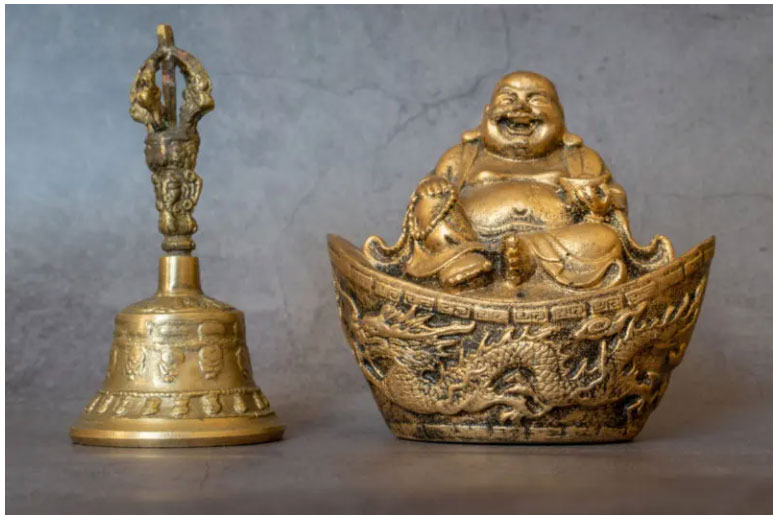
The different mudras
There are about 100 mudras. It is the position of the hand of the Buddha in the various statues that represent him. These mudras each have their meaning and require a particular installation in order to deploy its full powers.
The Bumisparsha Mudra
The Buddha in the Bumisparsha Mudra position is most often in a seated position. His right hand rests on his knee with fingers pointing to the ground while his left hand holds his left knee with the palm facing up. Bumisparsha means "to touch the ground" or "to take the ground as a witness". This mudra represents the moment when Buddha attains enlightenment at the foot of the fig.
This mudra represents strength, truth, liberation, but also victory over darkness. During the struggle with the devil Mara, the earth rumbled terribly when the prince touched the ground and said, "I bear witness to you.
To have this statue in the house means to have an unshakeable strength to overcome all the problems and temptations that come into the house. This statue should be placed in the center of the house, at the main entrance or in the altar.
The Dhyâna Mudra
The statue dhyâna presents the Buddha with both hands resting at knee level. The back of the right hand is placed on the palm of the left hand. The thumbs can intertwine. This mudra means meditation, wisdom and attainment of enlightenment.
This mudra also represents energy, inner contemplation and attainment of higher energy. To take advantage of the powers provided by this mudra, the statue is ideal in a meditation room, at the altar or in the center of the house. It can also be placed in a study room to bring concentration.
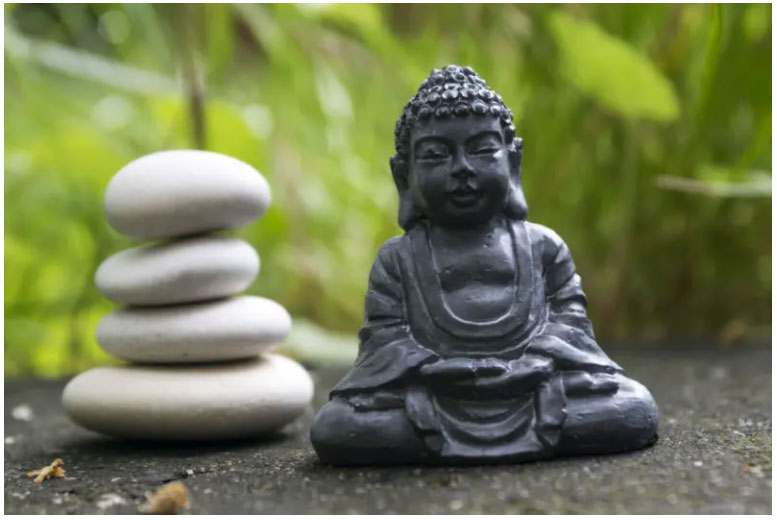
Varada Mudra
The Varada mudra accompanies the Buddha in a lotus sitting position. Varada statues have the right arm falling downward. The palm of the hand turns facing the user while the five fingers represent the five perfections according to the teaching of the enlightened one. These include generosity, morality, patience, effort and concentration.
This mudra can mean many things, including compassion, liberation, but also offering. It helps to obtain the energy sought from an enlightened being.
The Varada mudra will find its place in the heart of your Zen garden. It will bring peace, well-being, but also compassion.
Karana Mudra
The statue of Buddha Karana represents him either sitting or standing. The forefinger and little finger are pointing to the sky, while the other fingers form, with the palm of the hand, the mudra position.
The purpose of this statue is to preserve you from all negative energies. The mudra represented here helps to keep you away from all evil spirits, from all demons, but also from all conjurations of evil.
To receive the concentrated energy of the Buddha karana statue, place it in a place in the house that needs to be preserved. It is not at all recommended for the main entrance, as it may absorb the welcoming energy.
Dharma chakra Mudra
In a seated position, the Buddha performs this mudra with the tip of the index finger of the right hand touching the tip of the thumb of the left hand. This gesture symbolizes the wheel of Dharma in movement and the moment when the Buddha when he reaches his enlightenment returns to the forest to share his teaching.
This statue symbolizes the courage, patience, but also the determination of the Buddha when he went to teach. Its place is in the main entrance corridor or also in the living room.
The Abhaya Mudra
This mudra represents the Buddha with the right hand raised, fingers up and the left hand positioned along the body. While standing, the Buddha makes this gesture to symbolize courage and bravery. Abhaya also means "courage".
This mudra represents the absence of fear and the will to overcome one's fears. The best place for this statue is in the main entrance of the house or in the living room.
Vitarka Mudra
The Buddha statue with the Vitarka mudra is most often found in a seated position. In this posture, the tips of the thumb and forefinger form a circle. The right hand faces the user while the left hand rests on one knee.
This mudra evokes the period of Buddha's teaching. The gesture of the hand symbolizes the energy and wisdom brought by the teaching. It also represents Buddha's determination to transmit his knowledge without fear.
This mudra is most often associated with the Abhaya mudra. This statue will find its place in the office, in the library, between books and manuals.
Vajrapradama Mudra
The statue of Buddha presenting the vajrapradama mudra offers an unusual hand gesture. The fingers are intertwined and the thumbs are open. The hands are posed close to the heart. This gesture can mean peace, but also love.
The Vajpradama mudra evokes an energy full of passion, at the same time soft, soothing, but above all eternal. It can be associated with eternal love. This mudra also symbolizes self-esteem, peace with oneself and especially self-confidence, which pushes to go towards others. According to the Buddha "when trust is there, the heart becomes the strongest communicator".
The Buddha statue representing this mudra is ideal for the heart of the house, but also for the living room or the main entrance.
Conclusion on the Buddha statues
Having a statue of Buddha does not necessarily mean that you have to be a follower of Buddhism. One can have this kind of object, to get the necessary positive energies and wisdom brought by the Buddha's teaching. This object deploys a soothing power and a feeling of peace. So if you wish to establish peace, love, and happiness in your home, buy your Buddha statue or your Buddha incense holder without further delay.
